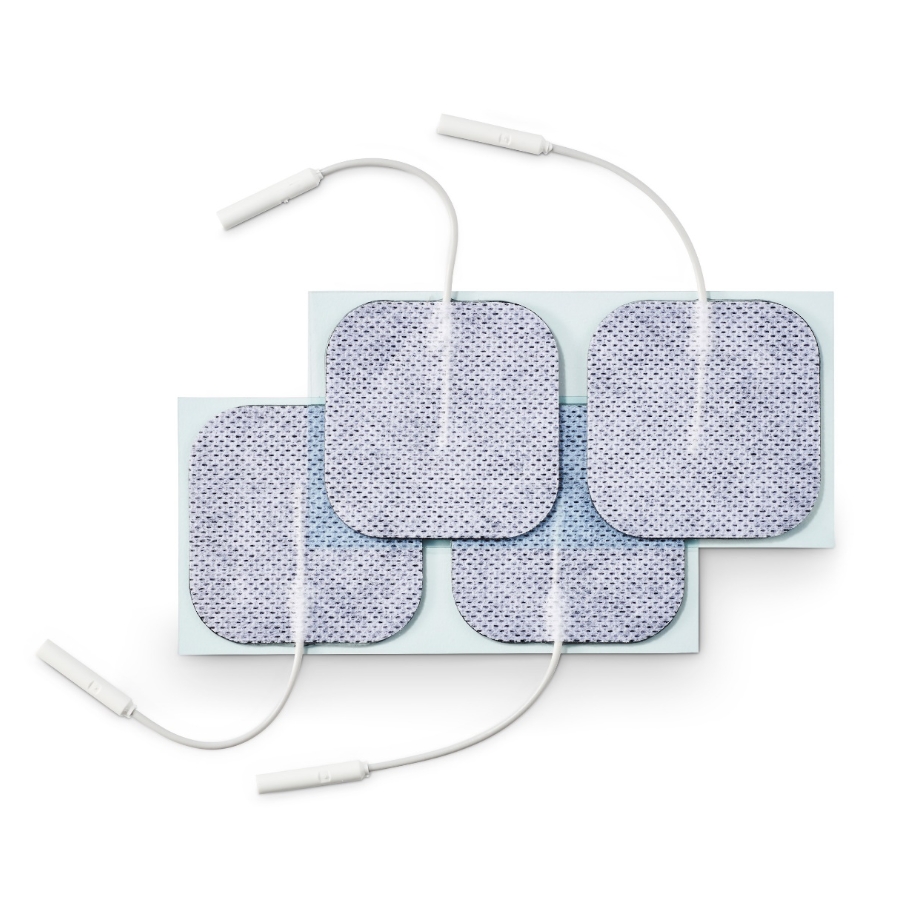Electrotherapy is a popular method used in physical therapy and pain management. It involves electrical signals to stimulate nerves and muscles, promoting healing and relieving pain. Among the various types of electrodes used in electrotherapy, 2×2 electrodes are particularly notable for their versatility and effectiveness. This article will explore the importance of choosing the right electrodes, the benefits of 2×2 electrodes, and how to use them effectively.
Choosing the Right Electrodes for Electrotherapy
The effectiveness of electrotherapy largely depends on the type and quality of electrodes used. Electrodes are the conduits through which electric currents are delivered to the body, making their conductivity, size, and material key to treatment success. 2×2 electrodes, typically square-shaped and measuring 2 inches on each side, are most commonly used due to their suitable size for various treatment areas.
When selecting electrodes, it’s crucial to consider the specific treatment requirements. The electrode size affects the current’s dispersion across the treatment area. Smaller electrodes are better for targeting specific, localized areas, while larger ones may be more effective for broader areas. However, 2×2 electrodes strike a balance, offering sufficient coverage while still providing targeted therapy, making them ideal for treating medium-sized areas such as the lower back or joints.
Benefits of 2×2 Electrodes
For several reasons, 2×2 electrodes are favoured in both clinical settings and home therapy. Firstly, their size makes them incredibly versatile, suitable for various body parts, and easy to apply and remove. This flexibility ensures practitioners and patients can use them on different muscles and joints without needing multiple sizes.
Secondly, these electrodes are known for their excellent conductivity. Good-quality 2×2 electrodes, like those provided by Biomedical Life Systems, ensure consistent and even distribution of electrical currents, which is crucial for effective therapy. Uniform current flow helps reduce discomfort during treatment and maximize therapeutic benefits.
Moreover, durability is another significant advantage. High-quality 2×2 electrodes can withstand multiple uses without losing their adhesiveness or conductivity. This makes them a cost-effective option for regular electrotherapy sessions, as they do not need to be replaced frequently.
Effective Usage of 2×2 Electrodes
Proper application and maintenance are key to maximizing the benefits of using 2×2 electrodes in electrotherapy. Here are some tips for effective usage:
- Skin Preparation: Ensure the skin is clean and dry before applying the electrodes. Remove any oils, lotions, or dirt that impede the adhesive or conductivity. This not only helps in better adhesion but also enhances the effectiveness of the therapy.
- Placement: Position the electrodes correctly depending on the target area. The placement might vary depending on whether the goal is to stimulate nerves or muscles. It’s often beneficial to place them around the area of pain or along the nerve pathways. Consulting a physical therapist or a manual can provide the best placement techniques for specific guidance.
- Care and Maintenance: After each use, clean the electrodes gently with a damp cloth and let them air dry. Store them properly by placing them back on their original liner and in a sealed bag. This maintenance helps prolong their life and maintain their effectiveness.
- Regular Inspection: Regularly check the electrodes for any signs of wear or degradation. Replace them if they become stiff or cracked or if the adhesive no longer sticks to the skin. Using worn-out electrodes can lead to ineffective treatment and discomfort.
Conclusion
2×2 electrodes are a cornerstone of effective electrotherapy, offering the perfect balance of size, conductivity, and versatility. Whether used in a clinical setting or at home, understanding and utilizing these electrodes correctly can significantly enhance the therapeutic outcomes of electrotherapy sessions. As always, consult a healthcare professional to ensure you use the appropriate electrode type for your specific treatment needs.



